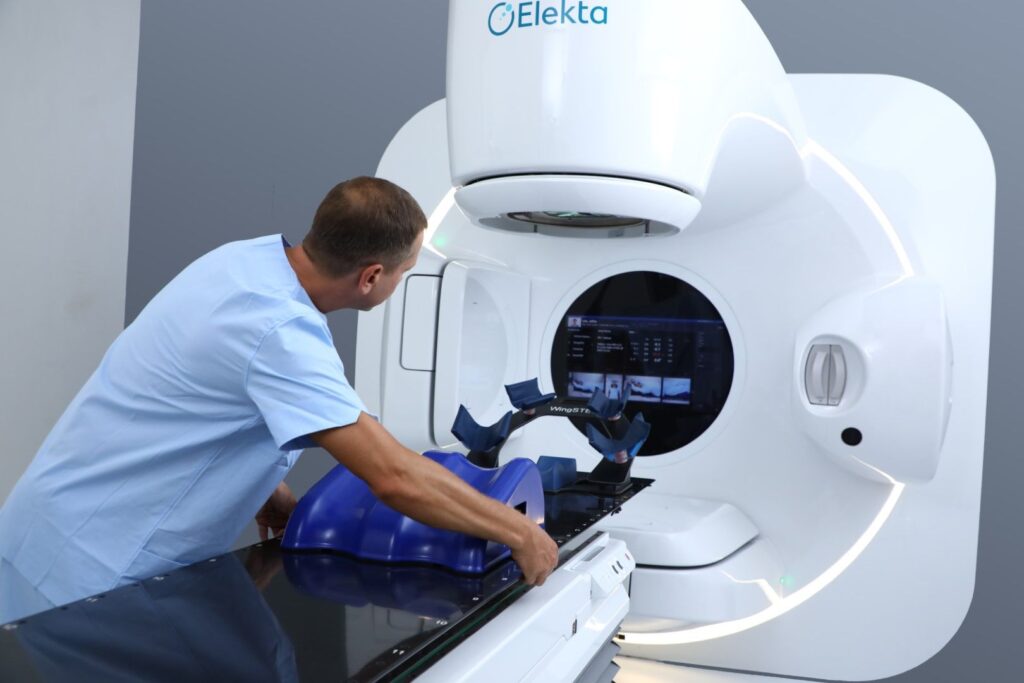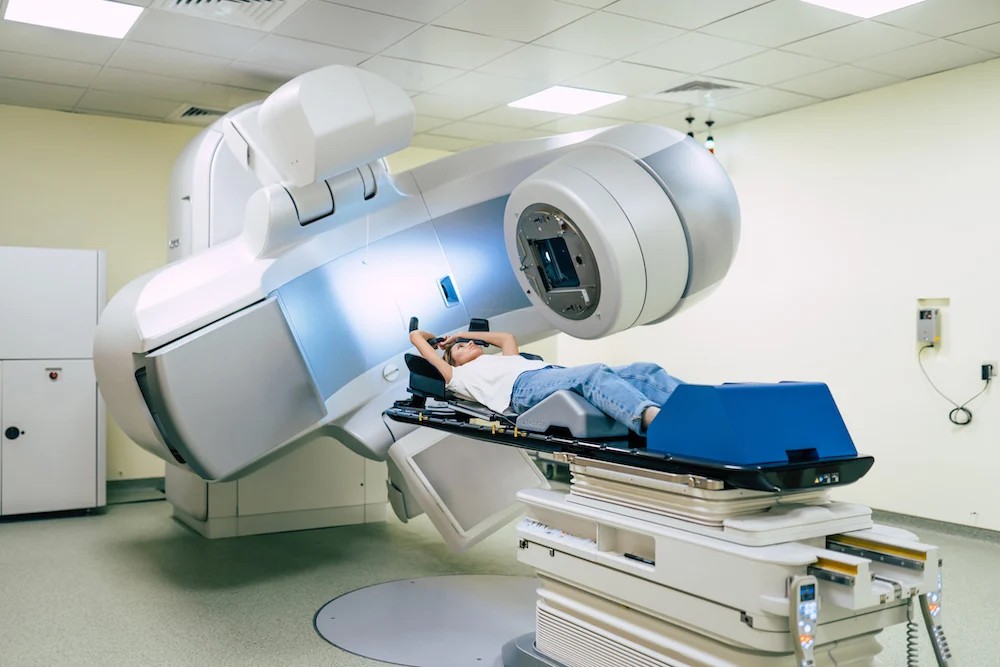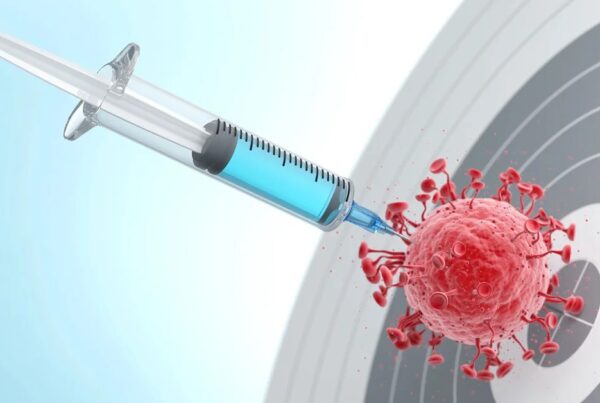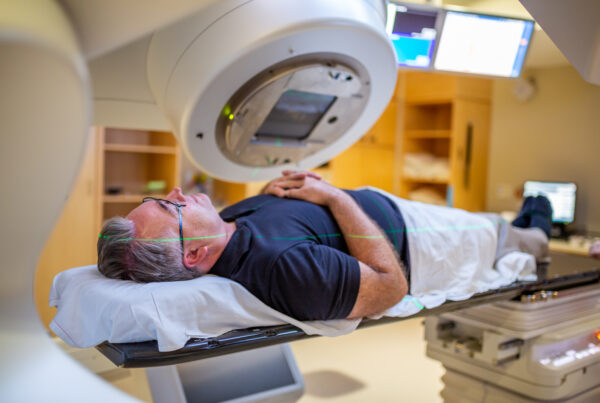In humanity’s long fight against cancer, radiation therapy is still a main item in the arsenal. It’s one of the most precise and effective weapons.
In fact, radiation therapy is a core part of treatment. It’s used for about 60% of cancer patients.
High-precision linear accelerators are used. Techniques like Intensity-Modulated Radiation Therapy (IMRT), protons, and Stereotactic Radiosurgery (SRS/SBRT) are also available.
These allow focused radiation doses on the tumor. Damage to healthy organs is minimized.
Recent developments are important. These include real-time magnetic guidance. Also, daily plan adaptation helps.
Today, radiation is safer and more effective than ever. Liva Hospital in Turkey uses these advanced protocols. Their team includes oncologists, medical physicists, and qualified nurses.

What is Radiation Therapy?
Radiation therapy uses precisely calculated doses of ionizing radiation. Its purpose is to destroy cancer cells. It also slows their growth.
It works by damaging the DNA of cancer cells. This prevents them from multiplying.
Its main advantage is its ability to target tumors very precisely. It preserves the surrounding healthy tissues as much as possible.
So, it uses high-energy rays (photon, proton, or electron). These damage the DNA of cancer cells. This stops their ability to divide.
The rays are given from outside the body (External Beam). Or they are given from inside the tumor.
This uses radioactive carriers (Brachytherapy). The method depends on the cancer type, location, and size.
Main Types of Radiation Therapy for Cancer
Radiation therapy is no longer as frightening as it used to be. This is due to its varied types and safety levels:
- 3D Conformal Radiation Therapy (3D-CRT): This was the standard for years. But it is less precise at preserving healthy tissue.
- Intensity-Modulated Radiation Therapy (IMRT/VMAT): The beam is shaped to the tumor. Its intensity changes as it rotates around the patient. This improves protection for nearby organs.
- Stereotactic Radiosurgery/Body Radiation Therapy (SRS/SBRT): This uses very high doses. It’s given in a few sessions. Precision is at a millimeter level. It’s especially effective for early lung tumors.
- Proton Therapy: This offers a higher concentration within the tumor. It reduces exposure to sensitive organs like the heart and lungs.
- Brachytherapy (Internal Radiation Therapy): This involves implanting radioactive sources. They are placed inside or near the tumor. It’s especially used in the cervix. It’s a very effective method.
When is Radiation Recommended?
Radiation might be recommended as the main treatment for cancers of the head and neck, cervix, and prostate.
It’s also an adjuvant option after surgery. This is common in breast and brain cancers. Or it’s used for palliative purposes.
This means to relieve pain from the tumor spread. At Liva Hospital, each case is discussed.
This happens in a multidisciplinary oncology board. The best approach is chosen for each patient. Before starting, the patient undergoes precise steps:
- CT and MRI Scans: These create a 3D map of the tumor.
- Radiation Dose Calculation: Specialized software calculates the dose. It matches the tumor size and type.
- Patient Immobilization: Masks or immobilization devices are used. This prevents movement during the session.
Steps for Delivering Radiation Therapy
The steps of delving into this treatment might include:
- Planning: CT or MRI scans precisely locate the tumor.
- Plan Design: Precise software is used (like IMRT or VMAT).
- Navigation and Guidance: IGRT and MR-Linac adjust daily positioning. This reduces errors to less than 0.5 mm.
- Delivery and Follow-up: This includes daily identity and dose plan verification. Symptom monitoring also occurs during treatment.

Side Effects and How to Manage Them
Facilities should follow IAEA standards. These require the principles of “justification” and “optimization.”
They also mandate sufficient concrete shielding. Strict review of the dose plan before each session is required. This helps avoid side effects such as:
- Early: These include fatigue, skin changes similar to burns, and localized hair loss.
- Late: Examples include fibrosis, dry mouth, and bowel inflammation. Modern plans reduce these risks. Liva Hospital management includes periodic blood tests. Breathing simulation is used to adjust the dose when needed.
Conclusion
Today, radiation therapy is more accurate and safer than ever. Modern technology is integrated.
This includes IMRT, SBRT, MR-Linac, and proton therapy. Strict safety protocols are applied.
Liva Hospital offers a complete treatment experience. It combines high effectiveness with minimal complications. This improves patient outcomes and quality of life.
Liva Hospital in Turkey applies all international standards. It provides IMRT, proton, and MR-Linac technologies under one roof.
It also has a remote follow-up program. Support for managing symptoms like fatigue and skin changes is also provided.
Frequently Asked Questions (FAQ)
Is radiation therapy painful?
The session itself is not painful. But skin effects or fatigue may appear later.
How many sessions are needed?
This varies by technique. It can be one session in SRS or SBRT. Or it can be 25–35 sessions with conventional radiation.
Is proton therapy always better?
It helps reduce damage to the heart and lungs. But it’s not always better in all cases. It depends on the tumor type and location.
What are the most dangerous late effects?
These can include lung fibrosis, heart problems, or spinal issues. But using improved planning greatly reduces these risks.
Can it be combined with immunotherapy?
Yes, studies show improved response. But careful monitoring is needed to avoid combined toxicity.
How do I prepare for a session?
It’s advised to wear comfortable, scent-free clothing. Avoid creams on the treatment area. Be prepared with instructions provided by Liva Hospital regarding post-session care and hygiene.



